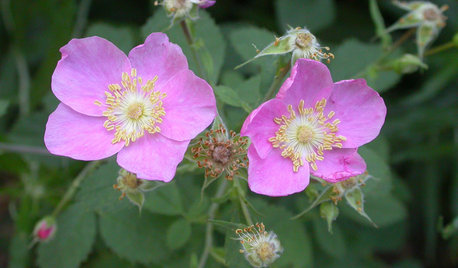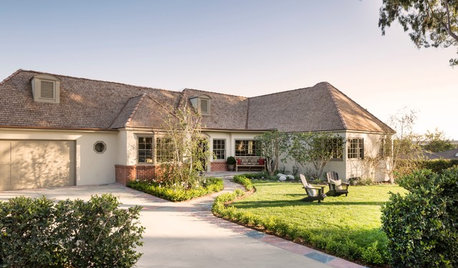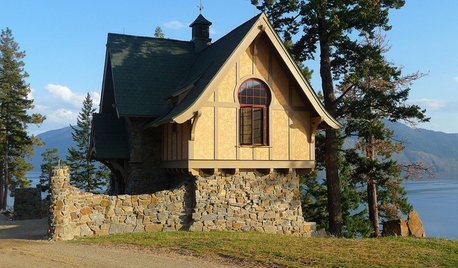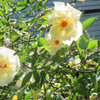Alister Clark roses
rosemeadow_gardener
14 years ago
Related Stories

GARDENING GUIDESGreat Design Plant: Rosa Californica
Plant California wild rose for easy care and a touch of romance in your native garden
Full Story
HOUZZ TOURSMy Houzz: An Australian Circus Family's Home Juggles Extra Room
With a new extension and a main-cottage overhaul, this busy foursome now has plenty of sustainably minded space
Full Story
TRADITIONAL HOMESHouzz Tour: Historic Coastal Home Is Rescued From Neglect
A designer lavishes TLC on a splendid Normandy revival house in Laguna Beach, embracing its original style in the renovation
Full Story
SMALL HOMESHouzz Tour: A Beach Cottage Gets Its Vibe Back
Historically accurate details restore the 1940s charm of a Laguna Beach home
Full Story
DESIGNER SHOWCASESHollywood Glamour at the 2016 Wattles Mansion Showcase House
Designers take inspiration from their favorite movies and Hollywood icons to decorate rooms for this Southern California show house
Full Story
ARCHITECTUREHow to Design a Storybook Cottage
A client’s request: “Build me a house where Disney meets Tudor.” The architect explores the details that make the style
Full Story
GARDENING AND LANDSCAPINGBid Bad Garden Bugs Goodbye and Usher In the Good
Give ants their marching orders and send mosquitoes moseying, while creating a garden that draws pollinators and helpful eaters
Full Story
HOUSEPLANTSHow to Force Amaryllis Bulbs Indoors
Enjoy vibrant red blossoms even as gardens turn snowy white, by teaching this hardy repeat performer to ignore the calendar
Full Story
PETSHouzz Call: Send in the Design Cats
Post your best photo of your cat at home, in the garden or with you in your studio. It could be published in a featured ideabook
Full Story
PETSHouzz Call: Show Us Your Summer-Loving Dog!
Share a photo of your pooch kicking back in the backyard, helping you in the workshop or enjoying your favorite summer getaway
Full Story





andreageorgia
rosemeadow_gardenerOriginal Author
Related Discussions
What about 'Lorraine Lee' and other Alister Clark's Roses?
Q
Talk on Clark Roses book Tuesday night
Q
I'd like the Austin roses to be in the modern forum.
Q
Alister Clark for Carmel
Q
andreageorgia
sherryocala
rosemeadow_gardenerOriginal Author
rosemeadow_gardenerOriginal Author
york_rose
rosemeadow_gardenerOriginal Author
york_rose
sherryocala
rosemeadow_gardenerOriginal Author
york_rose
melissa_thefarm
rosemeadow_gardenerOriginal Author
york_rose
rosemeadow_gardenerOriginal Author
york_rose
york_rose
rosemeadow_gardenerOriginal Author
sammy zone 7 Tulsa
rosemeadow_gardenerOriginal Author
anntn6b
rosemeadow_gardenerOriginal Author
lookin4you2xist